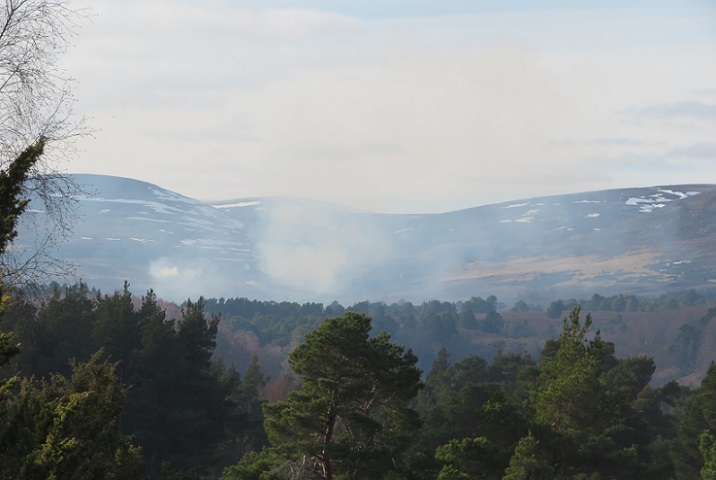
Following my post on the air pollution caused by muirburn (see here), I have been sent a number of photos by readers expressing concern about the levels of destruction that have been caused by muirburn these last two weeks, both inside and outside the Cairngorms National Park. In the case above, the people concerned had been cycling up the River Dulnain but were forced to turn round at the point the photo was taken because of the smoke.
The Muirburn Code sets out a list of 23 offences relating to muirburn, the last two of which read:

The failure to protect human health is not that the law is too weak, but rather than those with authority, including Public Health and the Health and Safety Executive, do not have the resources to do so.
Another offence listed in the Code is “Causing damage to any woodland [Hill Farming Act 1946, s25]“. Looking at the photo above, whatever the destruction being caused to the moor, you might think it was the height of irresponsibility to light a fire just beyond an area of Caledonian Pine Forest when the wind is blowing straight towards it. Unfortunately, land-managers know that even if they DO burn down an area of ancient and protected pine forest, as happened in Glen Tanar (see here), no-one will be prosecuted.
An extensive problem

Several readers commented that the problem is not just one in the National Park, but affects places not traditionally associated with muirburn and may be carried out for reasons other than grouse shooting. This enormous fire on Skye was probably to “improve” grazing. Here is another photo of a much smaller fire in Wester Ross:

And here, from further south:
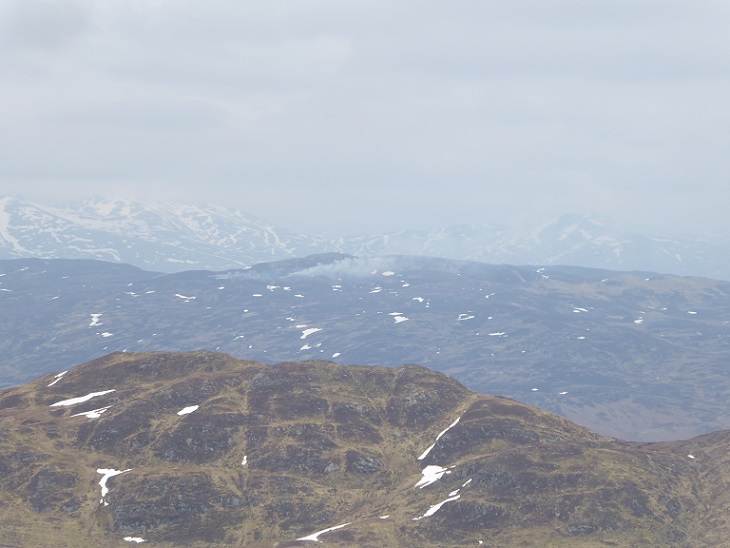
Double standards for landowners and visitors
The reader who sent the An Teallach photo was one of several to comment on the double standards that are applied to landowners and visitors when it comes to fires:
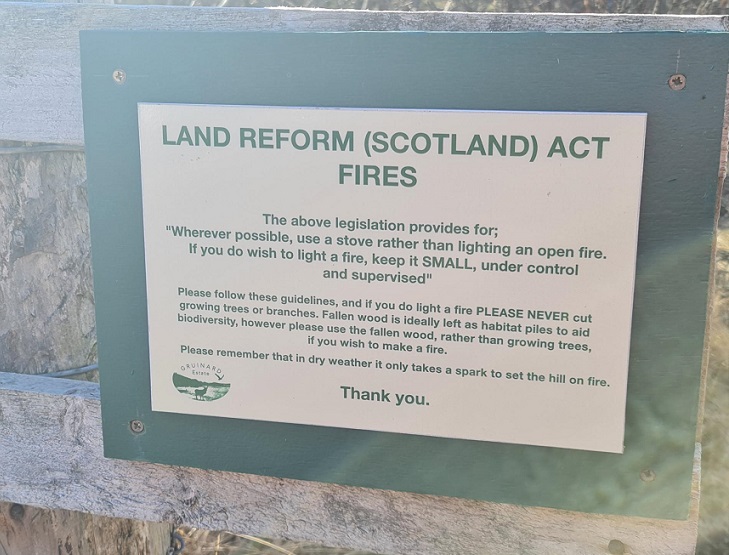
And here are a couple of examples from within the Cairngorms National Park:

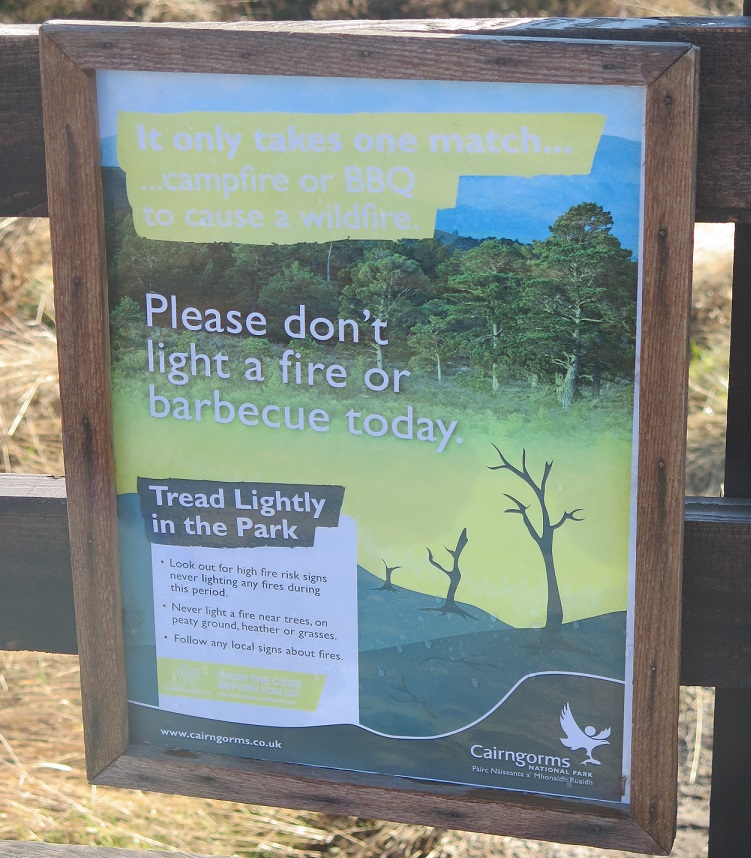
The wording in these two signs reflects the Scottish Outdoor Access Code and the location of the second sign is perfectly reasonable, next door to the greatest Caledonian Forest regeneration success story in the Cairngorms. Wildland Ltd may have stopped driven grouse shooting and muirburn on the land its owns, but just over the boundary from Glen Tromie on the Phones, Etteridge and Cuaich Estate the burning starts:
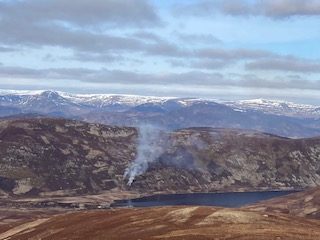
While the Cairngorms National Park Authority (CNPA) heavily messages visitors about the danger of fires, it is silent on the much bigger and destructive fires started by landowners.
At the Cairngorms Local Access Forum meeting in March (see here) CNPA staff proposed a change in messaging from don’t light fires in certain areas to don’t light fires anywhere:

In doing so the CNPA have abandoned the message in the Scottish Outdoor Access Code (see here) that you can responsibly light a fire away from woodland and peaty soils but if you do so keep it small and under control. Whatever the arguments for this, it’s a bit rich when the CNPA isn’t asking landowners to do their bit for nature and stop muirburn, despite know this releases carbon into the atmosphere and has created a wildlife desert in much of the Cairngorms. Perhaps access staff at the CNPA need to talk to their conservation colleagues?
The Cairngorms National Park Authority approach to muirburn by landowners
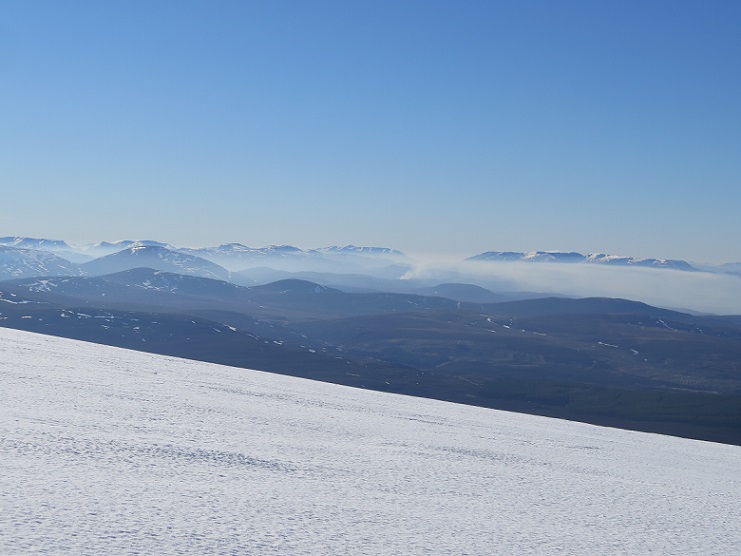
In December 2019 the CNPA Board considered a paper Net Zero with Nature and agreed “To identify the global climate emergency as an overarching priority for the CNPA.” The paper correctly identified the problem and the challenge:
The complicity with sporting estate management runs deep
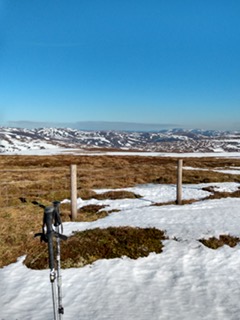
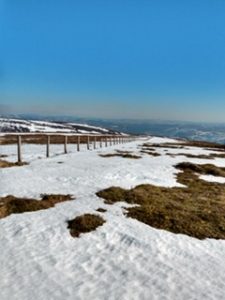
The view north from the Lecht, the horizon covered in a pall of smoke.
Most of the area was covered by an initiative known as the Tomintoul and Glenlivet Landscape Partnership (see here). Between 2016 and 2021 the Cairngorms National Park Authority secured £3,594,553, almost all from the Heritage Lottery Fund, for the Partnership which covered 200 square kilometres of land owned by the Crown Estate within the Moray Council area . A report on the project, one of the aims of which was “To take action to restore, conserve and enhance important natural and built heritage features for a sustainable future”, is to be considered by the CNPA Board next week (see here). While supporting a whole host of worthy community initiatives – c20 projects in all – the Landscape Partnership did nothing explicitly to address the muirburn which is the biggest single influence on the degraded landscape of the area, releases carbon into the atmosphere and harms biodiversity.
The two conservation projects that did take place under the auspices of Landscape Partnership both promoted sporting estate interests. There was a waders and wetland project, useful for those who argue that intensive grouse moor management and muirburn are good for birds like curlew . This was managed by the RSPB, enabling the Crown Estate to avoid any unnecessary expenditure on conservation. The second project was to restore damage done to the water environment of the Spey Catchment. This has been caused in large part by the way sporting estates have managed the land (overgrazing and muirburn). Having wrecked their own fishing, the Crown Estate cleverly managed to get the public to pay to repair part of the damage.
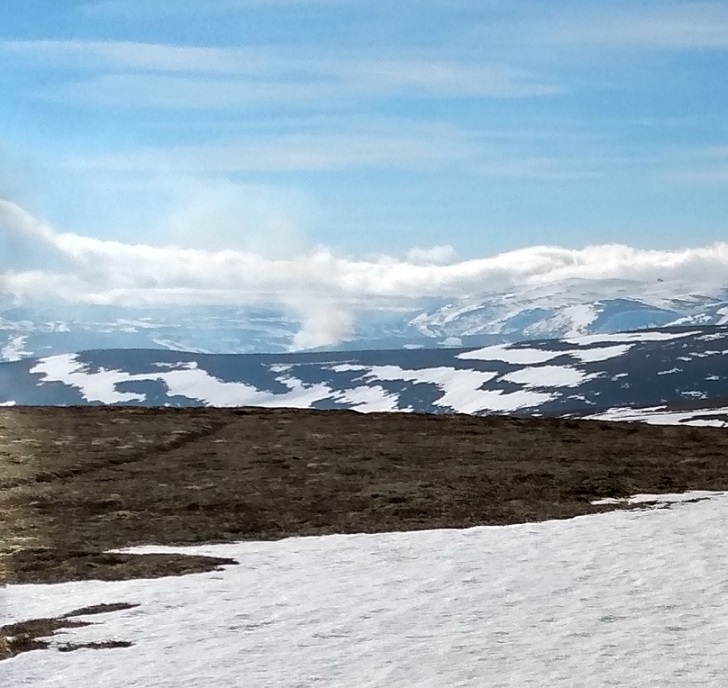
Meantime, another reader’s photo shows that further up the River Avon, the destruction continues.
Instead of tokenistic conservation projects, we need a joined up approach to carbon and nature conservation across the National Park. It should be cause for reflection for everyone who cares about conservation in Scotland that in the year Scotland hosts the Climate Change conference, the Cairngorms National Park Authority is allowing so much of the National Park to go up in smoke.
Is it legal to kill a field vole by setting it on fire?
Is it legal to kill a lizard by setting it on fire?
Is it legal to kill an adder by setting it on fire?
Is it legal to set fire to a birds nest?
Of course the answer is no, however we all know it happens all the time. The law that allows muirburn does not provide an exemption for this “collateral damage”. The game keepers know that it happens, but they dont have time to check and frankly they dont care. SNH knows it happens and they have to pretend they care, so to provide a facade of propriety, the Muirburn Code was ammended to require that areas to be burnt should be checked before the fire is started. This charade allows SNH to pretend that the gamekeepers made a “reasonable attempt” to avoid the accidental unlicenced killing of protected species. The Muirburn code is rarely followed and never monitored.
Its a complete political sham that has been engineered to allow muirburn to continue unabated.
Last spring and summer because of wildfires in the uplands I recall a number of gamekeepers in the press and on BBC Scotland putting forward the idea that they were doing us all a favour- effectively setting the moors on fire so they wouldn’t set on fire ? It seemed a strange logic to me. I can understand that they would argue that their fires are managed, but some get out of control as shown in Nick’s post. I have not been past for a few years now but the south western end of the Cromdale Hills above the A939 was one place where things looked like they had got out of control. A large are of hillside had been so scorched that what was left was blowing around and if not the charred dust was running into watercourses. Hopefully it has recovered by now. The argument is made that something called a ‘cool’ burn can actually help to preserve the peat. I’m no expert on peat and for all I know that’s right, but if we want the peat to continue to develop surely it requires some plant material to partially rot down. If you burn that material it’s just going up in smoke and contributing to carbon in the atmosphere when it could be contributing to keeping it in the ground. I realise there are also lots of issues about grazing levels and scrub development not to mention the grouse, but I just can’t see how intensive burning doesn’t increase carbon in the atmosphere while failing to keep it in the ground. Along with a coal mine in Cumbria not a great look for COP26.